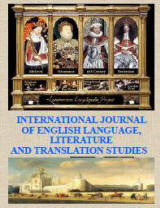Understanding Hinduism
Dr. Rajiva Ranjan
Email:1.rajivaranjan@gmail.com.
ABSTRACT
The complexity and diversity of Hinduism present
both challenges and opportunities for understanding its practices
and beliefs. One effective way to simplify and systematize these
elements is through the teachings of Adi Shankaracharya, a revered
philosopher and theologian from the early 9th century.
Shankaracharya is best known for establishing the Shanmata
tradition, a comprehensive six-sect system designed to unify Hindu
worship. This tradition incorporates six major deities, which
represent various aspects of the divine and cater to the diverse
spiritual needs of practitioners. By acknowledging multiple forms of
worship, Shankaracharya aimed to create a more inclusive approach to
Hindu spirituality.
In addition to the Shanmata tradition, Shankaracharya popularized
the Panchayatan puja system, which focuses on the worship of five
principal deities: Vishnu, Shiva, Shakti, Surya, and Ganesha.
Notably, this system omits Skanda, the god of war, which highlights
the emphasis on these five deities as the core figures in Hindu
worship. The Panchayatan puja not only aids individuals in choosing
a personal deity for devotion but also fosters a sense of community
among practitioners who may follow different paths within the
broader Hindu tradition. Overall, Shankaracharya's teachings serve
as a crucial framework for understanding and practicing the rich
tapestry of Hinduism.
Key Words: Hinduism, Shaivism, Vaishnavism, Shaktiism, Sauryaism,
Ganpatya, Smartism, Shiva, Vishnu, Devi, Surya, Ganpaty, Smart, Ram,
Krishna, Shankaracharya, Naga, Ramanandi, Aughar, Avadhut, Nath
Sampradaya, Gaudiya Vaisnavism.




